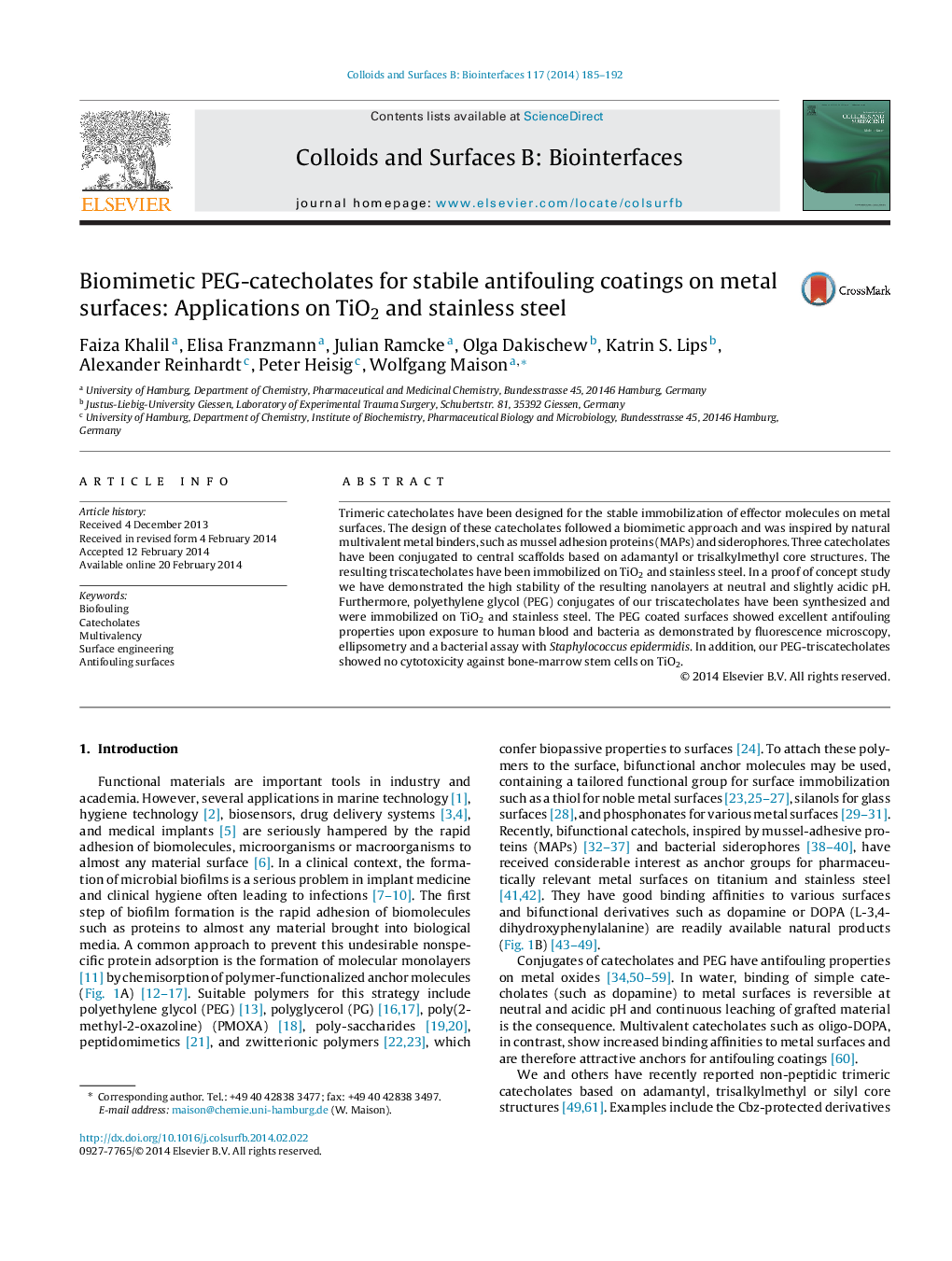| Article ID | Journal | Published Year | Pages | File Type |
|---|---|---|---|---|
| 599905 | Colloids and Surfaces B: Biointerfaces | 2014 | 8 Pages |
•Non-peptidic trimeric catecholates have been synthesized as bifunctional anchor molecules for metal surfaces.•Immobilization has been performed on TiO2 and stainless steel as clinically relevant materials.•Trimeric catecholates form stable nanolayers on TiO2 under neutral and slightly acidic conditions.•PEG-conjugates of trimeric catecholates show excellent antifouling properties in blood and against S. epidermidis.
Trimeric catecholates have been designed for the stable immobilization of effector molecules on metal surfaces. The design of these catecholates followed a biomimetic approach and was inspired by natural multivalent metal binders, such as mussel adhesion proteins (MAPs) and siderophores. Three catecholates have been conjugated to central scaffolds based on adamantyl or trisalkylmethyl core structures. The resulting triscatecholates have been immobilized on TiO2 and stainless steel. In a proof of concept study we have demonstrated the high stability of the resulting nanolayers at neutral and slightly acidic pH. Furthermore, polyethylene glycol (PEG) conjugates of our triscatecholates have been synthesized and were immobilized on TiO2 and stainless steel. The PEG coated surfaces showed excellent antifouling properties upon exposure to human blood and bacteria as demonstrated by fluorescence microscopy, ellipsometry and a bacterial assay with Staphylococcus epidermidis. In addition, our PEG-triscatecholates showed no cytotoxicity against bone-marrow stem cells on TiO2.
Graphical abstractFigure optionsDownload full-size imageDownload as PowerPoint slide
